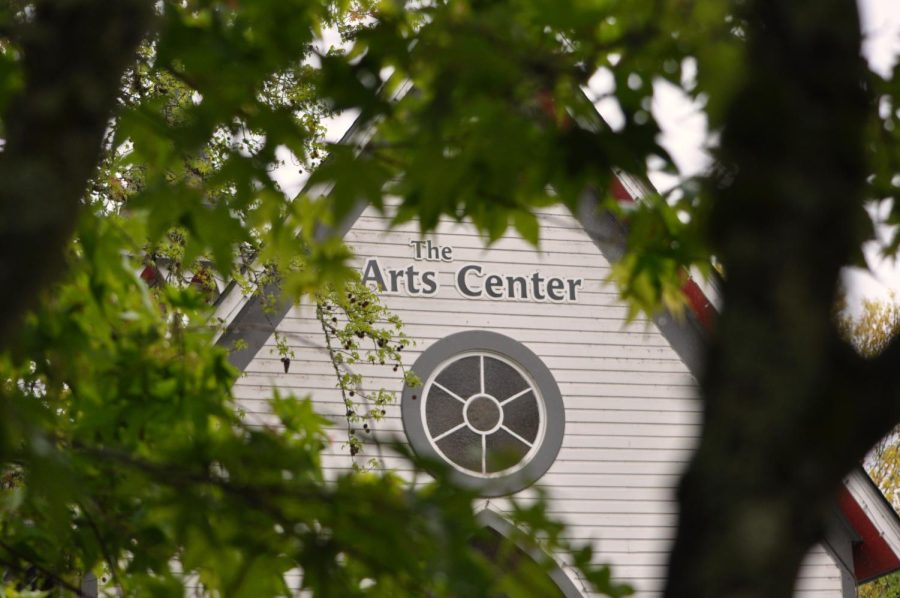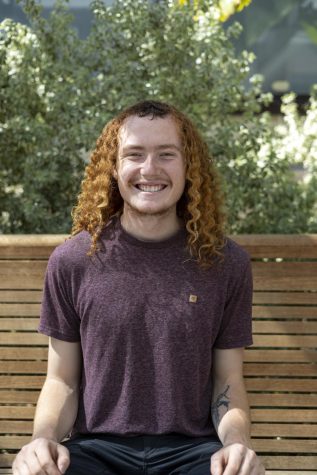The Corvallis Arts Center will host Arts Alive in person for the first time since 2019
The outside of the Corvallis Arts Center on May 12. The CAC building used to be a church and is over 100 years old, and the center features classes, residency for artists-to-be, a gallery and community events.
June 6, 2022
The Corvallis Arts Center is a local arts center that features classes and residency for artists-to-be and a gallery; this year will be the first since the COVID-19 pandemic that they will host Arts Alive in person.
“Community, connection and the positive role of the arts would be the buzz phrase I would use [to describe the Arts Center],” said Hester Coucke, the curator of the Corvallis Arts Center. “As a cultural hub, where one could get an introduction to first rate art and art by beginners from Oregon, get inspired, participate in art-making events, learn about the business of being an artist. Welcoming people from all backgrounds such as race, education level, financial (in)stability.”
CAC provides a way for the community to get involved in art, and for local artists to exhibit their work. Being located so close to campus also means that it can be easily viewed and utilized by Oregon State University students. During the summer, they host an event called “Arts Alive” which is a festival aimed at showing art and showing off the Corvallis Arts Center.
“Arts Alive is a great way to test the waters to what we do, or apply to Arts Alive to jump in the deep end,” said Claire Elam, the director of the Artist Accelerator Program. “If you aren’t ready to take that step, attend a lecture or view the online lectures.”
There are a number of other ways to get involved in the CAC aside from the big Arts Alive event in August, however.
“Come to our monthly artist meetups, come to as many receptions and art talks and volunteer,” Coucke said. “Volunteering can be done once a week, once a month, to only a few times a year. We need all kinds of expertise, talents and levels of commitment.”
CAC is a community focused building, and it is supported—both in art and finance—largely by the public. The funding for the center comes through donations and city support, and the center has paid and volunteer positions that keep it running.
“A diverse mix of city, state, business sponsorship and foundation funding [support the Corvallis Arts Center], some earned income from registrations and service fees, with the largest contribution coming from the over 700 members/donors making individual gifts of ten dollars to thousands of dollars each year,” said Cynthia Spencer, the Executive Director of the CAC.
CAC also features classes and programs, such as the AAP.
According to Elam, the AAP is an all-inclusive way for artists to achieve their art goals, and to help learn the business and management skills that might come with an art career.
“By the time they are leaving, they will have a rough draft of a business plan, artist’s statement, materials for pricing, CV listings and acceptance to a show or add to their resume, and the idea of how to structure a business,” Elam said.
According to Elam, the AAP is open to everyone. They mostly see two different groups of people—people who are done with art as a hobby and want to make it their career, and those who have tried that and had some trouble.
Along with the AAP, artists can get involved in the artist meetups from 5 to 7 p.m. the first Thursday of every month.
“The Arts Center was founded by a collaborative effort that included artists, civic leaders and Departments of the College of Liberal Arts in an effort to connect city residents and the OSU community through the arts,” Spencer said.
The Corvallis Arts Center has a history of working with Oregon State University, such as with exhibitions on campus and working along with staff and students to produce and display art.
“We hope to be able to engage younger people, and do meaningful work for young adults,” Coucke said. “It would be nice if the realization of the importance of art in one’s life, was more widespread and supported.”











































































































